Resource Hub
E-books
Copenhagen Optimization
Download our e-books
On the list below you can download all of Copenhagen Optimization’s e-books and whitepapers. We write about our field of expertise within airport optimization, operations management, and how to utilize data best.
Stand and Gate
Optimize your stand and gate management
Connected Operations
How to enhance airport efficiency through connected operations
Data Maturity
Top 3 trends in airport data management to keep an eye on
Virtual Queuing
The complete guide to successfully introduce Virtual Queuing for your passengers
Check-in
The complete guide on how to improve your check-in allocation process.
Virtual Queuing
Virtual Queuing for Airlines - for greater passenger satisfaction and a safer journey
Data Maturity
How to achieve efficient, data-driven, and safe airport operations by adapting to the new normal.
Forecasting
Forecasting made intelligent
Covid-19 and the subsequent challenges for airport operations
When Covid-19 first hit the world we knew immediately that it would change the aviation industry for good. To help airports overcome the challenges they were to face, we identified six areas, which we believed would be of crucial importance, and we did a deep-dive into each area. We have collected the entire library of Covid-19 challenge reports below.

4 simple steps: How airports can leverage their data and overcome Covid-19
Zero-based planning enabling optimized Covid-19 resumption
We advise airports to question status-quo and define new, optimized operations through the concept of Zero-Based Planning.
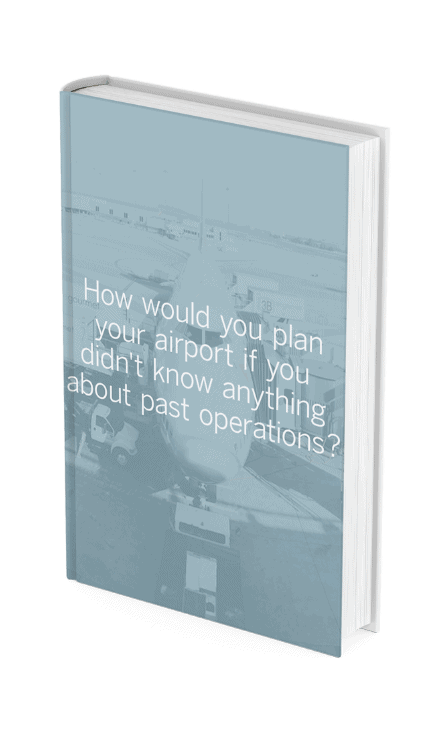
Covid-19: Executive Summary on airport operations management
How Covid-19 impacts airport operations planning – physical distancing, volatile schedules, and limited budgets.
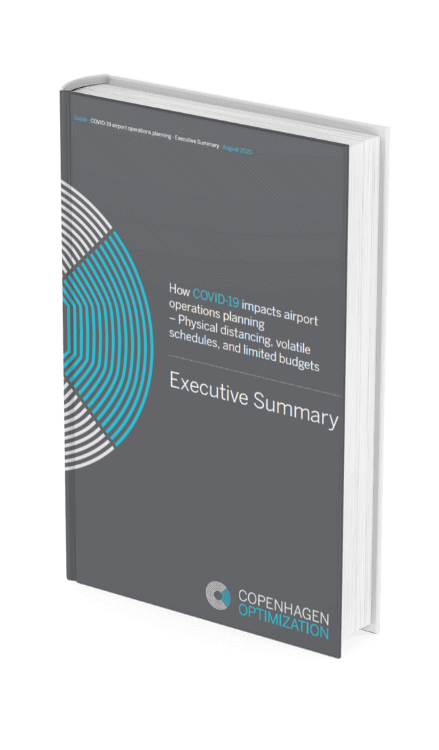
Covid-19: The complete guide on airport operations management
COVID-19 has brought the worst crisis in the history of aviation. To read more about how this might be the best opportunity ever for airports, airlines, and all other stakeholders, to rethink business models and adjust operational concepts to improve efficiency and passenger satisfaction download our complete COVID-19 guide.
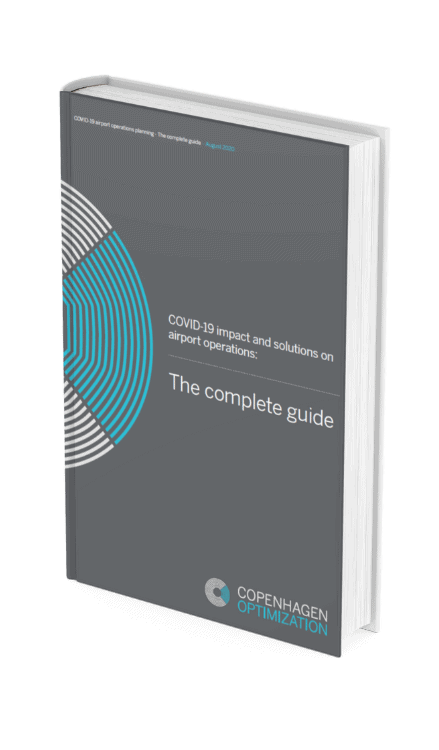
Covid-19 Challenge 6: Financial Impact
This article presents an outlook on the main financial challenges ahead for the airport and gives an outline of the impact of such challenges on airport operational planners.
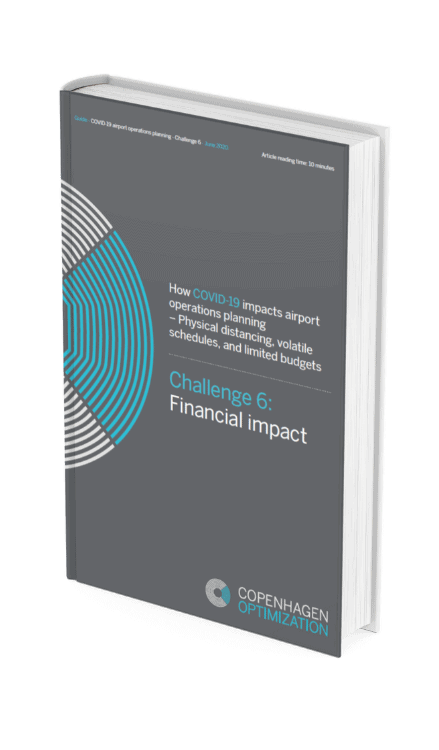
Covid-19 Challenge 5: Covid-19 Measures
This article presents a breakdown of the upcoming COVID-19 related measures aimed at identifying and isolating passengers unfit for flying.
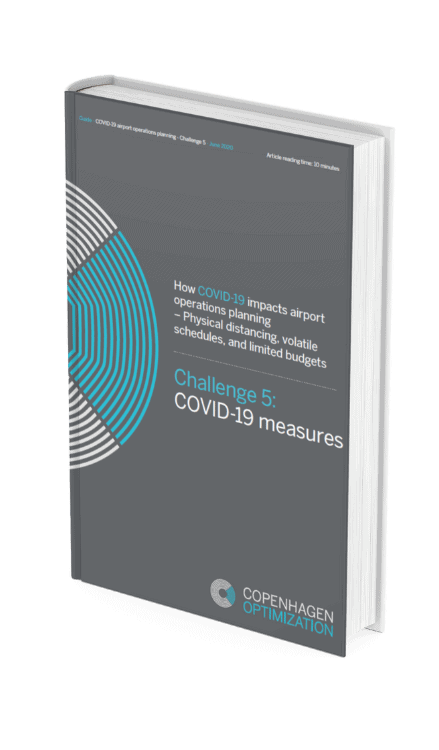
Covid-19 Challenge 4: Cleaning and personal protection equipment
New requirements for enhanced cleaning will have implications across the airport operational areas and will be addressed in this article.
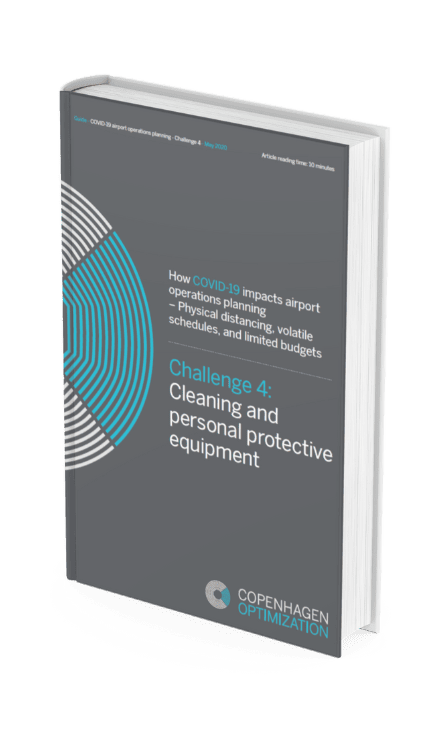
Covid-19 Challenge 3: Physical Distancing
Physical distancing has proven effective in limiting the spread of COVID-19. For airports, this means operational plans
must allow for physical (social) distancing
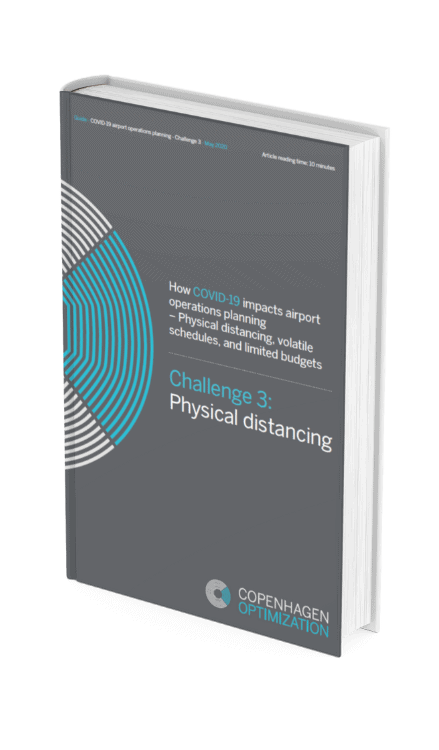
Covid-19 Challenge 2: Lower annual passenger numbers but unchanged or higher peak levels compared to pre-covid-19
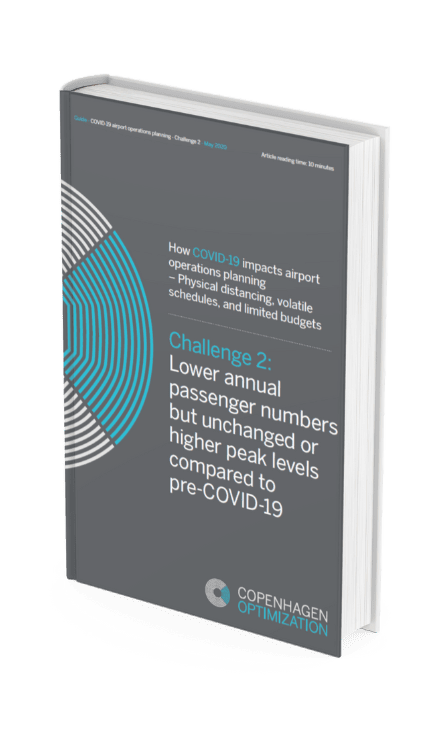
Covid-19 Challenge 1: High variance in flight schedules and load factors
A high degree of variance in both flight schedules and load factors is expected as traffic ramps up. Several airlines including Lufthansa, Delta Airlines, and United Airlines have publicly stated that they will emerge from the COVID-19 crisis as changed and smaller airlines.
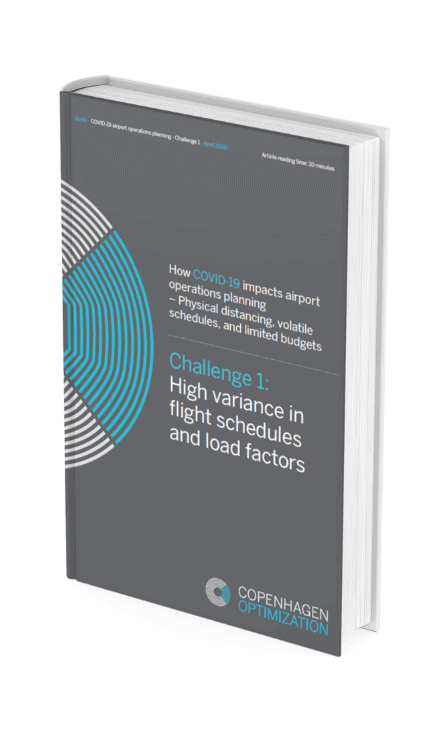
Covid-19: How Covid-19 impacts airport operations planning
Airports globally are currently experiencing an unprecedented challenge, as airlines have grounded aircraft in response to the sharp decrease in demand. Some airports have significantly limited their operations, while others have closed altogether, awaiting traffic to pick up gradually.
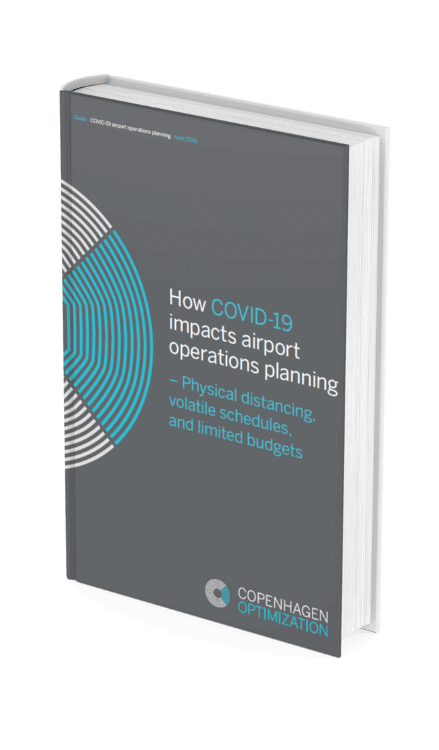

![copopt-logo-medium-NEG[32862] CopOpt logo](https://copenhagenoptimization.com/wp-content/uploads/elementor/thumbs/copopt-logo-medium-NEG32862-qcz6wm6b4wme6wbhpambduu6xnagsparzkj3wc1o20.png)